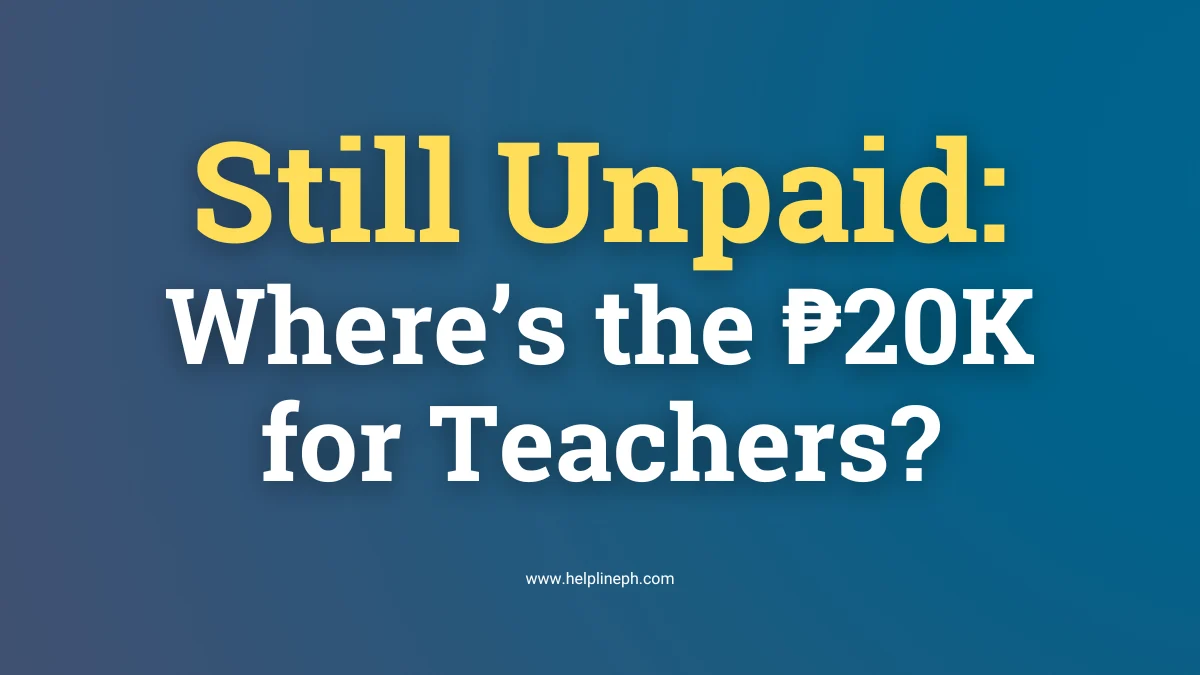Crisis in education is more than a phrase. It is the daily reality of public school teachers and learners in the Philippines. The Teachers Dignity Coalition (TDC) has asked President Ferdinand Marcos Jr. to visit public schools unannounced. They want him to see the real situation: flooded classrooms, missing textbooks, and no laptops.
What Teachers Face Every Day
Every day, public school teachers manage overcrowded classrooms. One room might hold 60 students. In some schools, rain floods the floors. Walls are cracked and roofs leak during storms. Many learners share old textbooks that fall apart. Teachers often lack basic digital resources like computers and internet.
These problems disrupt learning. When classes are interrupted by flooding, students lose hours of study time. Overcrowded rooms make it hard for teachers to give each student the help they need. Damaged furniture and broken fans add to the stress.
Budget and Funding Issues
Education funding has dropped in the 2025 national budget. For the first time in decades, education is not the top spending priority. This shift breaks the promise of our Constitution, which says education must get the largest share of the budget. Without enough education funding, schools cannot repair facilities or buy new books.
Public school teachers feel the impact most. They work in poor conditions without extra support. With fewer funds, real solutions like classroom repairs or new libraries remain out of reach.
The Fight for Overtime Pay
Teachers teach more than six hours a day. Yet, overtime pay has never been given. The Magna Carta for Public School Teachers (RA 4670) has guaranteed this pay since 1966. But for nearly sixty years, the law has been ignored. Recognition in speeches means little without real action.
Overtime pay is part of teacher welfare. It shows respect for the extra time teachers spend grading papers, preparing lessons, and meeting parents. Without it, many educators struggle to cover basic expenses.
Digital and Physical Tools Needed
In today’s world, both students and teachers need digital materials. Laptops, tablets, and reliable internet are no longer luxuries. They are essential tools for learning.
TDC calls for free laptops for every teacher. Loans or delayed delivery only add to teacher stress. Schools also need clean, steady electricity—especially in rural areas. Schools without power cannot use digital resources.
Building strong digital learning environments will help both teachers and learners succeed.
Too Many Students, Too Few Classrooms
President Marcos promised 40,000 new classrooms by the end of his term. This goal is welcome but still falls short. The Department of Education reports a backlog of about 165,000 classrooms today. Even doubling the promise would not fix the problem.
Overcrowded rooms harm both teaching and learning. Adding classrooms must go hand in hand with better school facilities and resources. Public–private partnerships can help, but the government must lead with clear standards and fair contracts.
Support for Teacher Welfare
Improving teacher welfare means more than pay. It means medical benefits, counseling services, and a lighter workload. Students feel safer and learn better when their teachers are healthy and supported.
TDC urges mass hiring of guidance counselors. Mental health challenges and bullying are real problems in schools. By hiring trained professionals at good salaries, schools can create stronger support systems.
The Call to Marcos
TDC challenges President Marcos to:
- Visit public schools without warning
- Talk directly to teachers, parents, and students
- Skip staged tours and glossy media presentations
By seeing the real crisis in education, the President can lead meaningful reforms. He can then commit to clear action steps and real deadlines.
What Needs to Happen Next
- Increase the Education Budget. Make education the top spending priority again.
- Implement Overtime Pay. Enforce RA 4670 now.
- Hire More Staff. Bring in guidance counselors, librarians, and non-teaching personnel.
- Build Classrooms Faster. Match the 165,000-classroom need with real construction plans.
- Provide Digital Tools. Give free laptops and ensure reliable internet and power.
- Improve Facilities. Repair roofs, fix plumbing, and replace old furniture.
Frequently Asked Questions (FAQs)
Why is there a crisis in education today?
The crisis in education stems from underfunding, overcrowded classrooms, and lack of digital resources.
What law supports teacher overtime pay?
The Magna Carta for Public School Teachers (RA 4670) guarantees overtime pay for teachers.
How many classrooms does the country need?
The Department of Education estimates a backlog of about 165,000 classrooms.
What digital tools do teachers need?
Teachers need laptops, tablets, internet access, and proper electricity.
How can citizens help address the crisis?
Citizens can write to their local representatives, support education budgets, and join calls for school visits.
By facing the real crisis in education, we can build a stronger learning environment for every Filipino child and the teachers who guide them.






